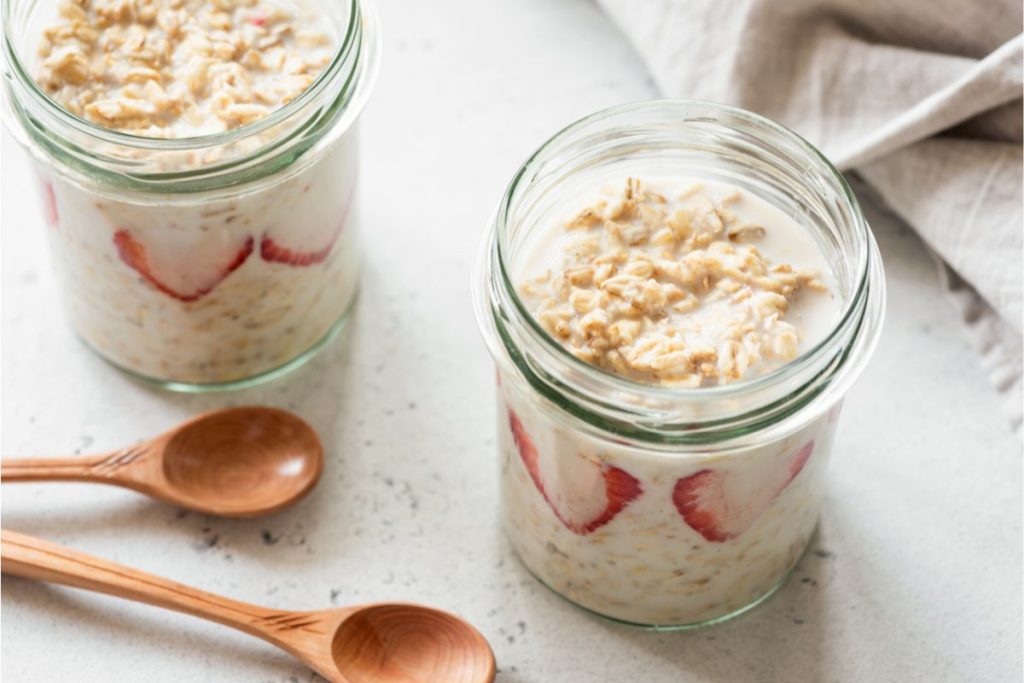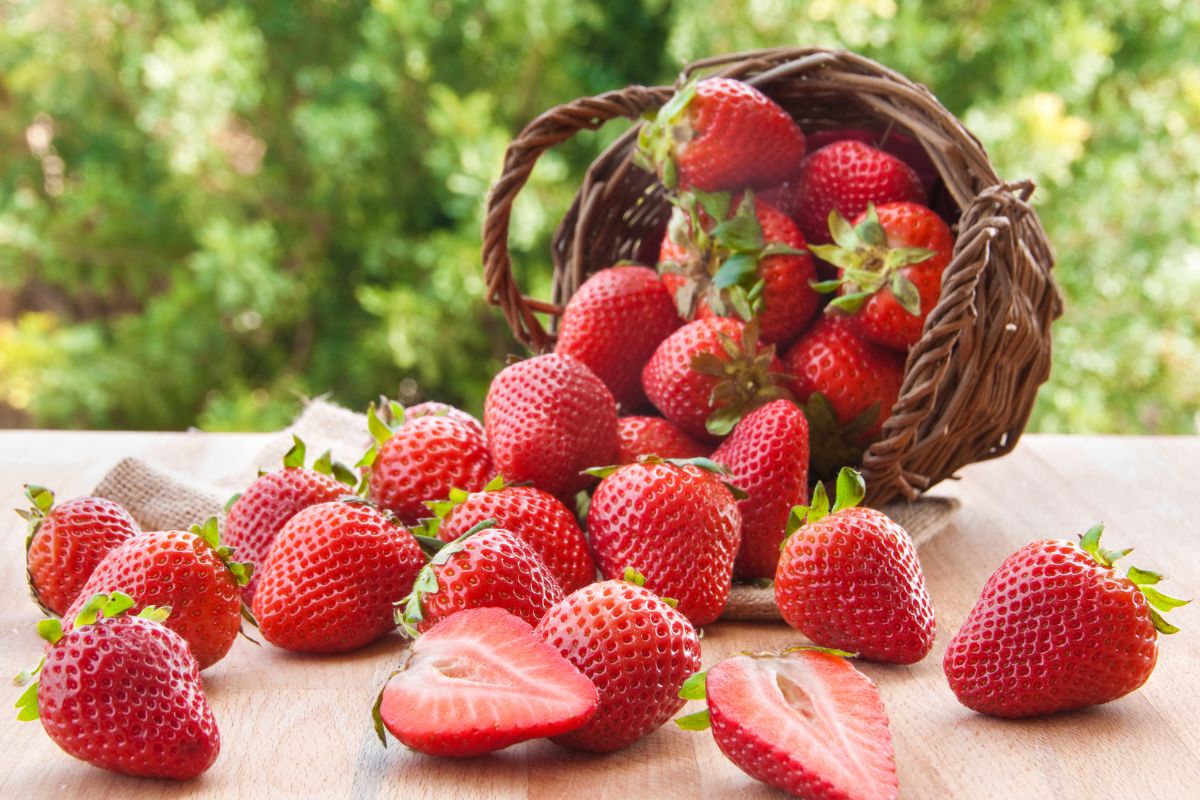To make sun-dried strawberries, clean fresh strawberries, remove the caps, and cut them into slices, halves, or quarters. Place the pieces on meshed drying racks in a single layer, and dehydrate them in direct sunlight for 3-7 days until they are pliable and leathery.
Table of Contents
Can You Safely Sun-Dry Strawberries?
Yes, you can safely sun-dry strawberries. Strawberries and other berries, such as cranberries, raspberries, and blueberries, are ideal for sun-drying because they have a high acid and sugar content. The low protein content of berries minimizes the chances of microbial or bacterial growth.
These environmental factors make sun-drying strawberries even safer:
- A minimum temperature of 85°F
- Drying racks with a reflective surface
- Mesh coverings over the strawberries to prevent pests
- Optimum air circulation in the drying area
- Prevailing humidity below 60%

How to Make Sun-Dried Strawberries
Dehydrating strawberries in the sun is easy. Here’s how to do it:
- Select ripe, firm strawberries with no brown spots.
- Clean the strawberries with cool running water. Use paper towels to dab off the excess water.
- Remove the caps (stem and leaf) using a sharp knife.
- Cut the fresh fruits into halves, quarters, or slices measuring 1/8-inch thick.
- Arrange the cut strawberries in a single layer with the skin side down on clean, dry reflective mesh trays or drying racks.
- Lay an aluminum or tin sheet on a wooden frame or concrete slab to reflect light onto the bottom of the drying racks to speed up drying.
- Place the loaded drying racks on the wooden frame or concrete slab lined with the reflective sheet. Add some blocks beneath the corners of the drying racks to raise them 1-2 inches off the reflective sheet for better aeration.
- Cover the drying trays with a cheesecloth to keep away dust, pollen, spores, pets, and insects.
- Dry your strawberries in direct sun for 3-7 days until leathery and pliable.
- Bring the drying strawberries indoors every night to avoid rehydration by night dew.
- Flip the strawberries every 2 days during the drying process to dry both sides evenly.
- Once the strawberries are fully dried, bring them inside to cool to room temperature and then place them in airtight containers for a week of conditioning. Shake the container 1-2 times daily and monitor for condensation.
- After conditioning, transfer the dried strawberries into airtight containers such as Mason jars and store them in a cool, dry place.

How Long Does it Take to Sun Dry Strawberries?
It can take 3-7 days to sun-dry strawberries. The drying time depends on the following factors:
- Airflow: Strawberries dry faster if there is a constant breeze.
- Climate: It’s easier to sun-dry strawberries in an area with more sun hours.
- Juiciness of the fruits: Juicier and fleshier fruits take longer to dehydrate.
- Prevailing humidity: Strawberries dry better in areas with low humidity.
- Size of the berries: Smaller strawberry slices dry faster than whole strawberries.
- Surface area: Cutting fruits into smaller, flatter pieces increases air and sun exposure.
What are the Benefits of Sun Drying Berries?
Sun-drying is a nearly cost-free method to produce dried fruits. Using free solar energy saves you the money you would have spent on gas or electricity to dry the strawberries using a food dehydrator or oven. Drying berries in the sun also eliminates the risk of burning associated with drying foods in the oven.

What are Some Health Benefits of Sun Dried Strawberries?
Sun-dried strawberries have many health benefits:
- Dehydrated strawberries contain flavonoids that may help lower bad cholesterol levels
- Dried strawberries contain vitamins and minerals, including vitamin C
- Dried strawberries have anti-aging and anti-inflammatory properties
- Quercetin, an antioxidant in strawberries, may help reduce the formation of blood clots
- The potassium in dried strawberries lowers the risk of vascular diseases.
- They contain digestive fiber, which can reduce constipation
What Can You Do With Sun-Dried Strawberries?
Sun-dried strawberries are a gluten-free, healthy snack. Try adding sun-dried strawberries to your diet in the following ways:
- Add texture to overnight oats
- Blended into veggie smoothies to add natural sweetness
- Chop into homemade granola
- Dice and add to trail mix with cashews, dark chocolate, and dried apricots
- Make a dried fruit medley with sun-dried and freeze-dried fruits
- Use as a crunchy ice cream topping instead of sprinkles

What is the Difference Between Dried Strawberries and Fresh Strawberries?
The main physical differences between dried and fresh strawberries are their size and moisture content. Dried fruits shrink because of the water loss and weigh less.
At a nutritional level, fresh and dried strawberries have the same nutrient and mineral content. However, dried strawberries have more concentrated sugars than fresh fruits.
How Long Do Dried Strawberries Last?
Dried strawberries last for six months when stored in airtight containers at room temperature or in the refrigerator.
How to Store Sun-Dried Strawberries
Store sun-dried strawberries in airtight containers such as glass jars at room temperature in a cool, dry, dark place. Vacuum-sealing the containers improves the shelf life of dried berries.

